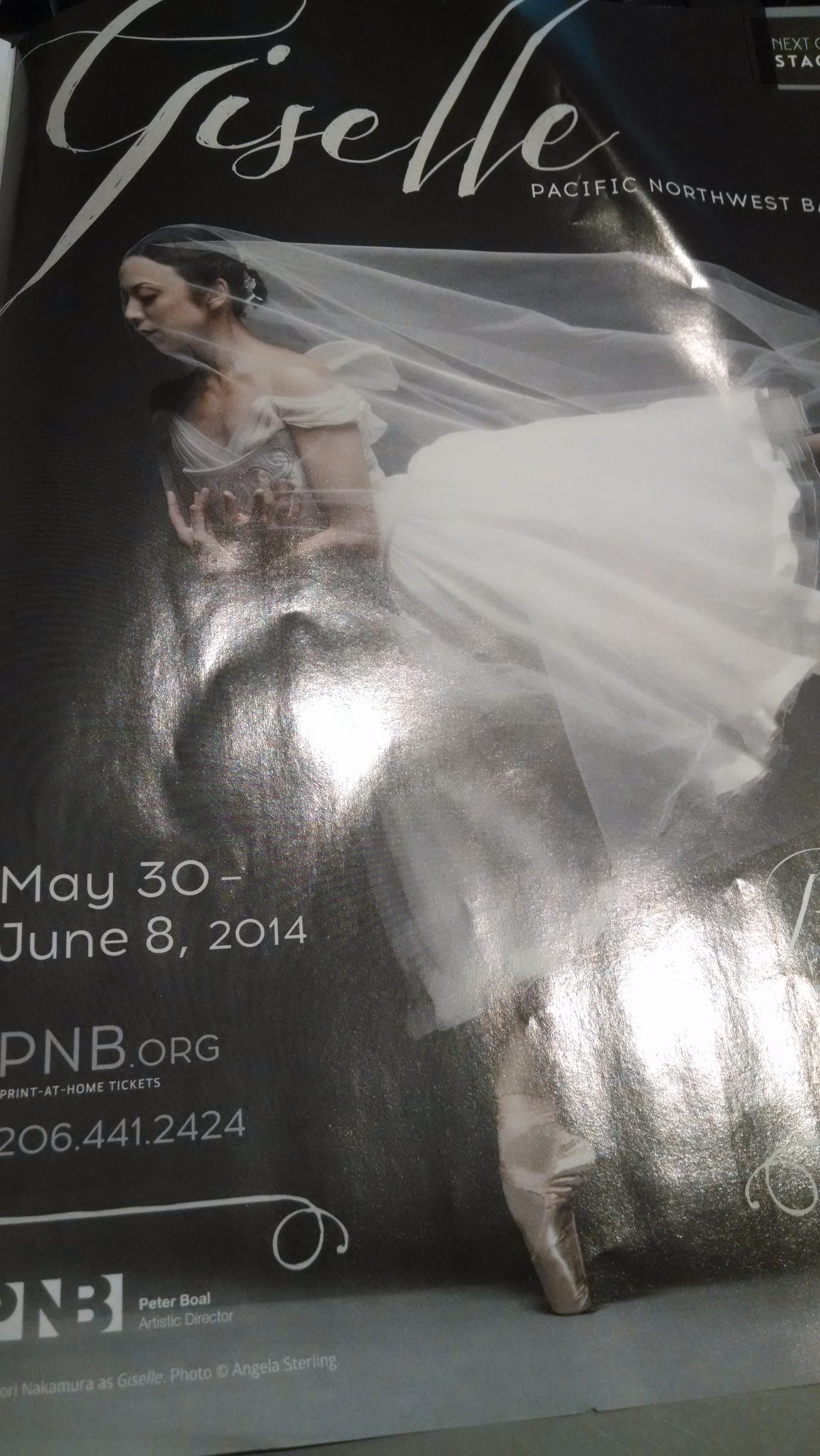 Giselle is right up there with Swan Lake when it comes to ballet fame. But I was still surprised when my oldest daughter gasped, “I have to see Giselle; you can take my sister to all the rest of them but I have to see Giselle,” and then proceeded to tell me the entire story. She practically levitated through both acts of the Saturday matinee. So it’s a little bit ironic Giselle was the most challenging piece for me this season.
Giselle is right up there with Swan Lake when it comes to ballet fame. But I was still surprised when my oldest daughter gasped, “I have to see Giselle; you can take my sister to all the rest of them but I have to see Giselle,” and then proceeded to tell me the entire story. She practically levitated through both acts of the Saturday matinee. So it’s a little bit ironic Giselle was the most challenging piece for me this season.
Tradition
My taste leans towards contemporary ballet; my favorite pieces are the ones that are also in the repertoires of modern dance companies. Giselle practically defines traditional ballet. It was first performed in 1841, over forty years before Marius Petipa (who I honestly thought basically invented ballet) produced his own version. Ballet was a whole different world then, with as much pantomime as dancing. Movement tended to either replicate traditional dances such as the waltz, or resembled a series of tricks, often repeated several times in a row. Elaborate sets and props helped to tell the story.
Historical Reenactment
The current Pacific Northwest Ballet production painstakingly recreated the original performance from historical documents, drawing on Petipa when historical documents failed. Occasionally Artistic Director Peter Boal created new choreography when the gaps could not otherwise be bridged. In a sense, then, this Giselle is almost a lesson in ballet history. It was interesting to see how some elements of pantomime are still in use, while the crossed wrists declaring death and awkward hands behind the back representing wings have (thankfully) disappeared.
The costumes and sets were newly designed for this year’s performance, and they were truly beautiful. The entire experience was a little like watching a fairy tale come to life. While my daughter loved the colorful costumes and folk dances of the first act, the happy peasant trope was a little too far outside my comfort zone. And don’t even get me started on the old Victorian “frailty is sexy” theme.
Aside: It seems like every story in the 19th century featured a beautiful maiden overcome by any form of exertion like dancing or singing. Seriously, I know consumption (aka tuberculosis) was common then, but shouldn’t that have made it harder for the Victorians to romanticize it? No matter how poetic a white lace hanky spotted with blood sounds, there can’t be anything romantic about the hacking cough required to produce such an effect.
Gothic Delight
The Gothic romance of the second act was much more to my taste. Giselle really had a chance to shine with extensive pointe work and some of the most beautiful dancing in the piece. There were some wonderful stage effects with floating shrouds and an apparition in a tombstone. But once again the story held me back.
The man who loved Giselle and told her the truth gets murdered by vengeful spirits. The man who loved Giselle and lied to her gets saved. She even gives him her blessing to marry a more suitable bride!? And that woman actually accepts him? I don’t care what century it is; if I happen upon my fiancé prostrate on the grave of another woman, the wedding is off.
To Wit
I have to give PNB props for injecting a little wit into the maudlin. In one example, Giselle teases her lover by inviting him to sit on a bench. The she spreads out her dress so there is no room for him next to her. Irritating as the story is, there is an element of interest there, too. Alexandre Dumas II’s novel Camille has crossed languages and media even more often than the Dashiell Hammett novel that spawned Kurosawa’s Yojimbo. Camille is supposed to be based on Dumas’ real-life lover. But Giselle predates that novel by seven years and includes many of the same plot points. Essentially, if you strip the ghosts from Giselle, Camille is the result.
So, even though Giselle is not the style of ballet I most enjoy, it provides plenty of food for thought; at the same time, there is some very pretty dancing, if you don’t think about it too much. And if you, like my daughter, prefer an old fashioned story ballet, Giselle falls only a little short of heaven.




About the author